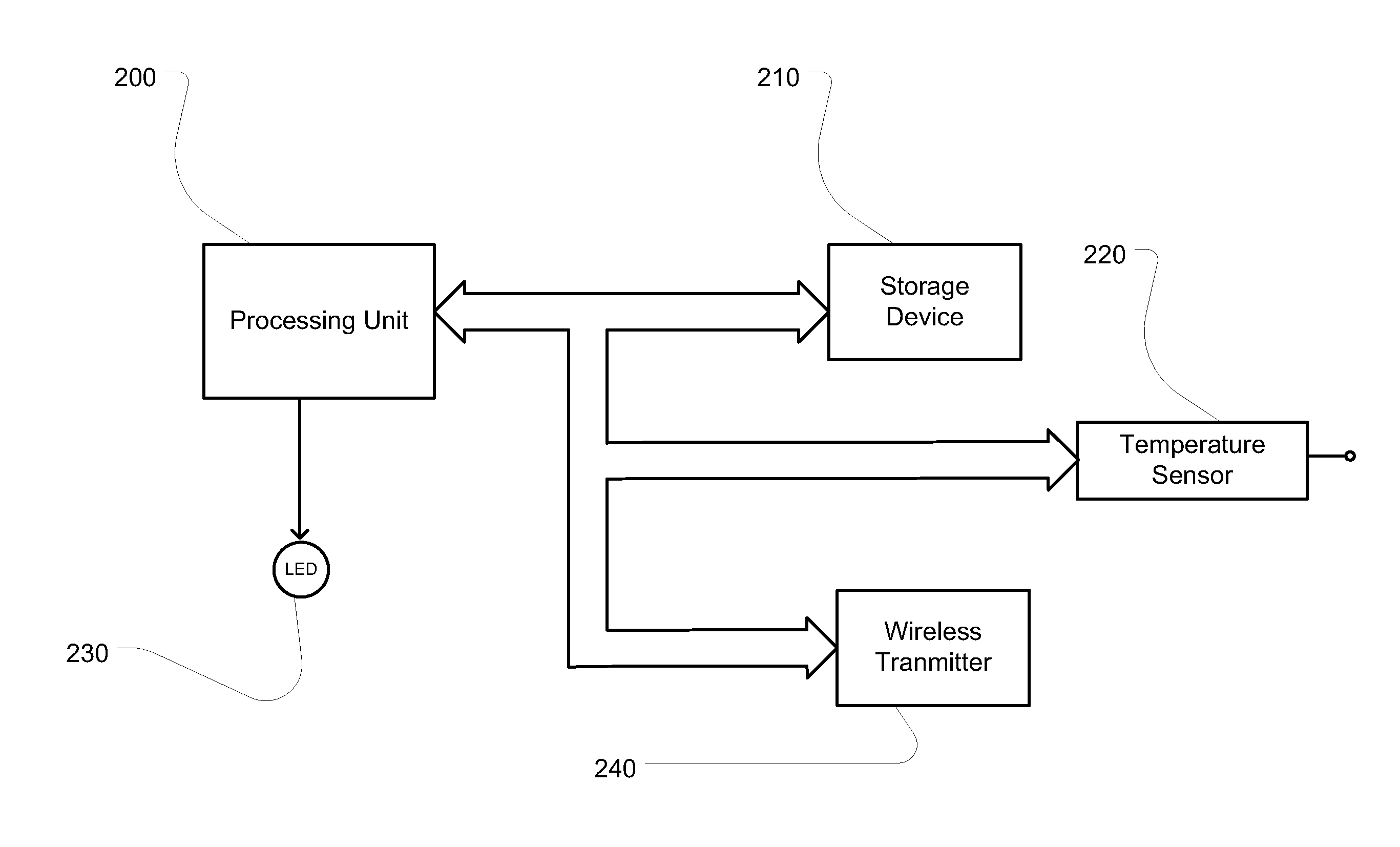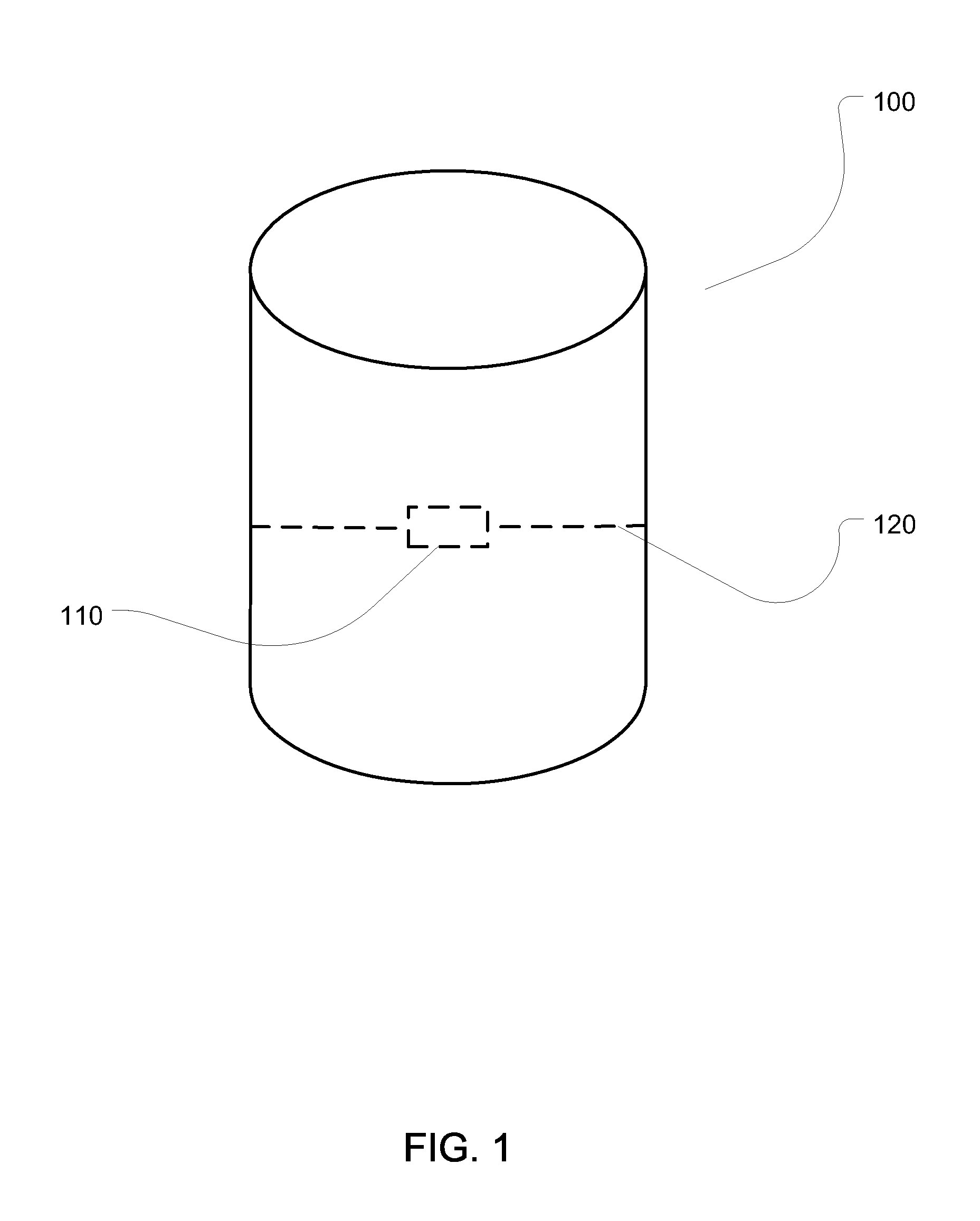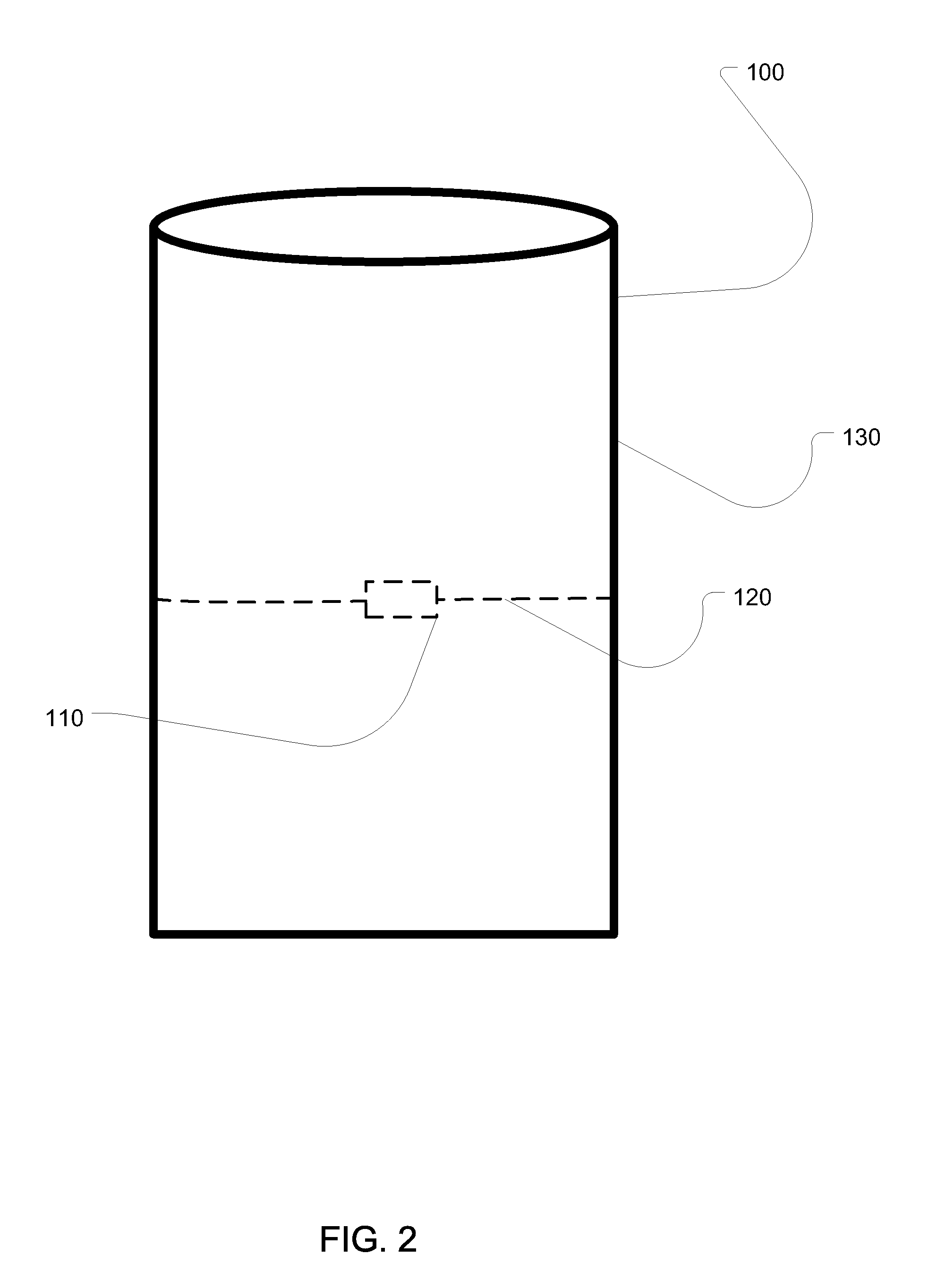Biomaterial Freezing
a biomaterial and freezing technology, applied in the field of biomaterial freezing, can solve the problems of reducing the chances of degradation, microbial contamination and denaturation, ph shift, and increasing ionic strength, and achieves the effects of low cost, easy sterilization, and simple solution
- Summary
- Abstract
- Description
- Claims
- Application Information
AI Technical Summary
Benefits of technology
Problems solved by technology
Method used
Image
Examples
Embodiment Construction
[0021]As described above, the need to monitor and insure the temperature profile of a biopharmaceutical material while it undergoes cryopreservation is imperative. Furthermore, it is important to be able to monitor the temperature of a biopharmaceutical material during other steps in the manufacturing and delivery process, such as transit.
[0022]In various embodiments according to the present invention, the biopharmaceutical material can be, but is not limited to, an amino acid, a peptide, a protein, a DNA molecule, an RNA molecule, a drug, an enzyme, an antibody or fragment thereof, a tissue or fragment thereof, an organ or fragment thereof, a preservative, a blood product, a cell, a cellular organelle, an inclusion body, and a cellular aggregate. Furthermore, the material may be serum, blood, plasma, an amino acid formulation, a protein formulation, a nucleic acid formulation, and a cell culture media formulation
[0023]FIG. 1 shows a first embodiment of an apparatus of the present i...
PUM
| Property | Measurement | Unit |
|---|---|---|
| temperature | aaaaa | aaaaa |
| size | aaaaa | aaaaa |
| flexible | aaaaa | aaaaa |
Abstract
Description
Claims
Application Information
 Login to View More
Login to View More - R&D
- Intellectual Property
- Life Sciences
- Materials
- Tech Scout
- Unparalleled Data Quality
- Higher Quality Content
- 60% Fewer Hallucinations
Browse by: Latest US Patents, China's latest patents, Technical Efficacy Thesaurus, Application Domain, Technology Topic, Popular Technical Reports.
© 2025 PatSnap. All rights reserved.Legal|Privacy policy|Modern Slavery Act Transparency Statement|Sitemap|About US| Contact US: help@patsnap.com



